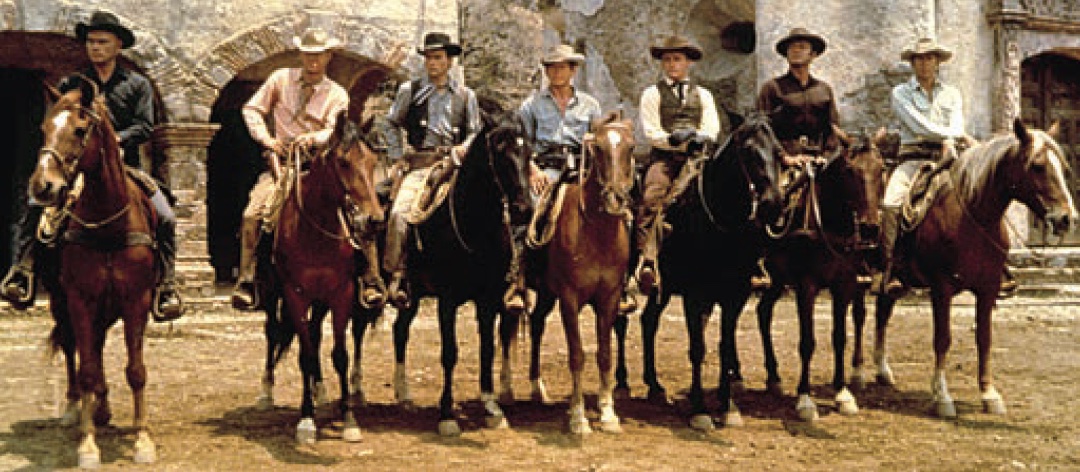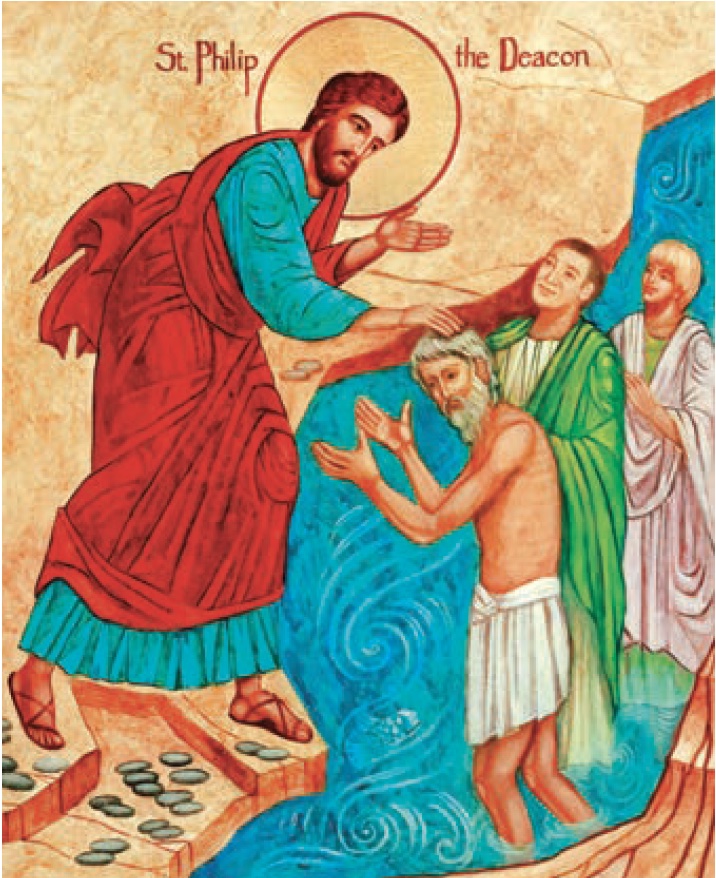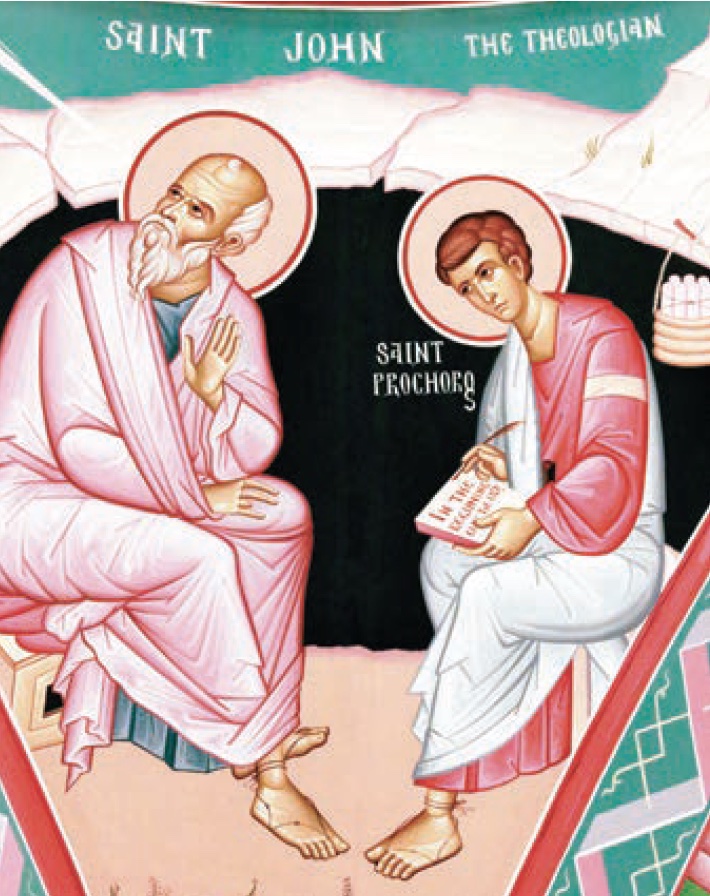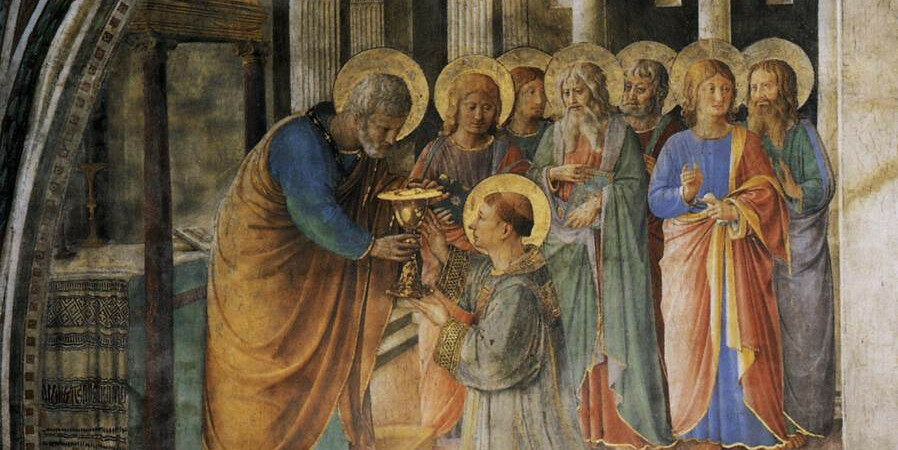The Magnificent Seven
We know Stephen and Philip, but what about the five ‘forgotten’ deacons?
Deacon Victor Puscas Comments Off on The Magnificent Seven
“The Magnificent Seven” was a 1960 Western film directed by John Sturges starring Yul Brynner, Steve McQueen and Charles Bronson. Seven gunfighters are hired by Mexican peasants to liberate their village from oppressive bandits. The movie has been described as one of the greatest films in American history and was selected for preservation in the Library of Congress as culturally, historically or aesthetically significant. So who cares?

Well … with apologies to Brynner, McQueen and Bronson … there was another group of seven men who were historically significant and arguably more magnificent. I’m speaking, of course, of the first seven deacons who were appointed, under the guidance of the Holy Spirit, to assist the Twelve Apostles after disagreements arose over the care of poor widows in the early Church (cf. Acts 6:1-7). They appointed Stephen, Philip, Prochorus, Nicanor, Timon, Parmenas and Nicholas of Antioch.
However, other than Stephen or Philip, I would wager you have no idea what happened to the other five. So what do we know of these seven men? Well, I have done some research, and for this article I rely heavily on other research done by my colleague Patricia Kasten, as well as references to the Bible, the Catholic Encyclopedia, the U.S. bishops (USCCB) and the Orthodox Church in America.
Stephen and Philip
The original Greek translation of the Acts of the Apostles makes clear that these men were first chosen for table service, however, it didn’t take long before they were identified with other tasks. St. Stephen is the best known. He became a preacher speaking God’s word so fervently that “his face was like the face of an angel” (Acts 6:15). Stephen became so popular that the Jewish leaders in Jerusalem grew concerned and called him before the Sanhedrin. Stephen preached at length to them and, for his efforts, was stoned to death — the Church’s first martyr. Stephen’s feast day is Dec. 26.

After Stephen’s death, persecution of the Church broke out in Jerusalem and the disciples “all were scattered throughout the countryside of Judea and Samaria, except the apostles” (Acts 8:1). One of those scattered was St. Philip the deacon, who is sometimes called Philip the Evangelist because he also was a preacher. Philip preached, healed the sick and drove out demons in Samaria. A man named Simon, the magician, was impressed and asked to be baptized by Philip. However, once Peter and John came to Samaria to impart the Spirit upon Philip’s converts, Simon showed his true colors by trying to buy Peter’s power (cf. Acts 8:18-25).
With his work done in Samaria, Philip was sent by an angel to walk the road to Gaza where he encountered a court official of the Queen of Ethiopia who had been to Jerusalem. A eunuch was reading the Book of Isaiah but did not understand what he was reading. Philip explained to him how Jesus fulfilled Isaiah’s prophecies. The man was so impressed that he had Philip baptize him on the spot. The Ethiopian Church traditionally traces its history to the baptism of this court official.
Later, Philip was snatched from the scene by the Holy Spirit and went on to preach in Caesarea. This is where we last hear of him in Scripture. In Acts 21, Paul and Luke, who were passing through on their way to Jerusalem, stopped in Caesarea to stay at Philip’s house for several days.
We also hear that Philip had “four virgin daughters gifted with prophecy” (Acts 21:9). While the Western Church does not deal with these daughters, Eastern Christian churches honor at least one of them by name: St. Hermione, who was martyred in the year 117. Her feast day is Sept. 4. St. Philip’s feast day is Oct. 11.
The Other Five
Now, as to the other five. In the Eastern churches, the seven deacons share a feast day of July 28. St. Prochorus is honored as one of the “Seventy-two Holy Apostles” — those whom Jesus sent out in pairs — all of whom share a feast day of Jan. 4 (cf. Lk 10:1-23). In particular, Prochorus is said to have been a companion of Peter, and later of the apostle John. Some Eastern icons picture him as a scribe serving St. John. Prochorus reportedly became the bishop of Nicomedia in modern-day Turkey. Some traditions also call him a nephew of St. Stephen. In the Western Church, his feast is celebrated on April 9.

Plaisted,OSC
The Catholic Encyclopedia notes that nothing further is known for certain about the remaining deacons: Nicanor, Timon and Parmenas. In the West, St. Nicanor is honored on Jan. 10, and St. Timon on April 19 as a martyr. The Eastern Orthodox churches say Timon was appointed as a bishop in Arabia and had the gifts of healing and driving out evil forces. St. Parmenas is remembered on Jan. 23 in the West. The Eastern churches say that he preached in Asia Minor (modern-day Turkey) and was martyred in Philippi, Macedonia.
Not much is known of Nicholas of Antioch, a Jewish convert. He is not honored as a saint in the West and little is said about him in the East. “The Catholic Encyclopedia” notes that St. Clement of Alexandria (d. 98) reportedly said that Nicholas was jealous of his own beautiful wife and had to be reproved by the apostles. Evidently, in order to become a saint in first-century Palestine, one had to pay less attention to one’s wife! Whether that was true or not, a connection remained between the number seven and deacons. In later centuries, in keeping with the number of the first deacons, churches in major cities had no more than seven deacons. This was especially true in Rome until the 11th century, when the number was increased to 14. In the United States today, there are almost 20,000 permanent deacons!
Whatever may have happened to the Magnificent Seven after their appointment by the apostles, they now serve as examples of what the U.S. bishops ask us to remember about the diaconate: “Deacons are ordained as a sacramental sign to the Church and to the world, of Christ, who came ‘to serve and not to be served.’” First deacons in the Church, pray for us!
DEACON VICTOR PUSCAS is director of diaconate formation for the Diocese of Joliet, Illinois. He holds a D.Min. degree from Catholic Theological Union in Chicago.





